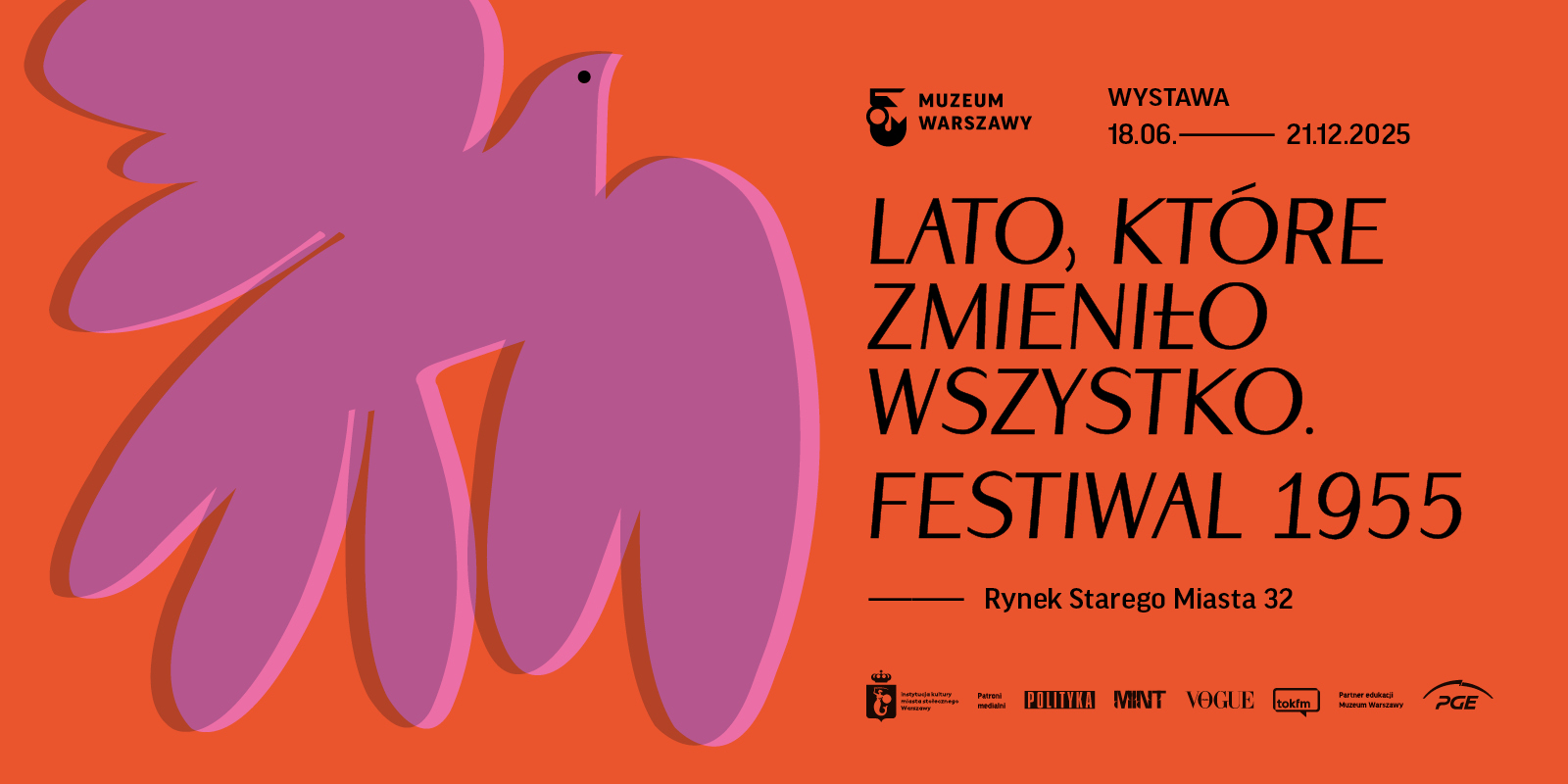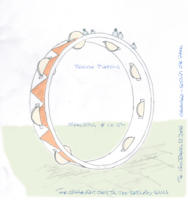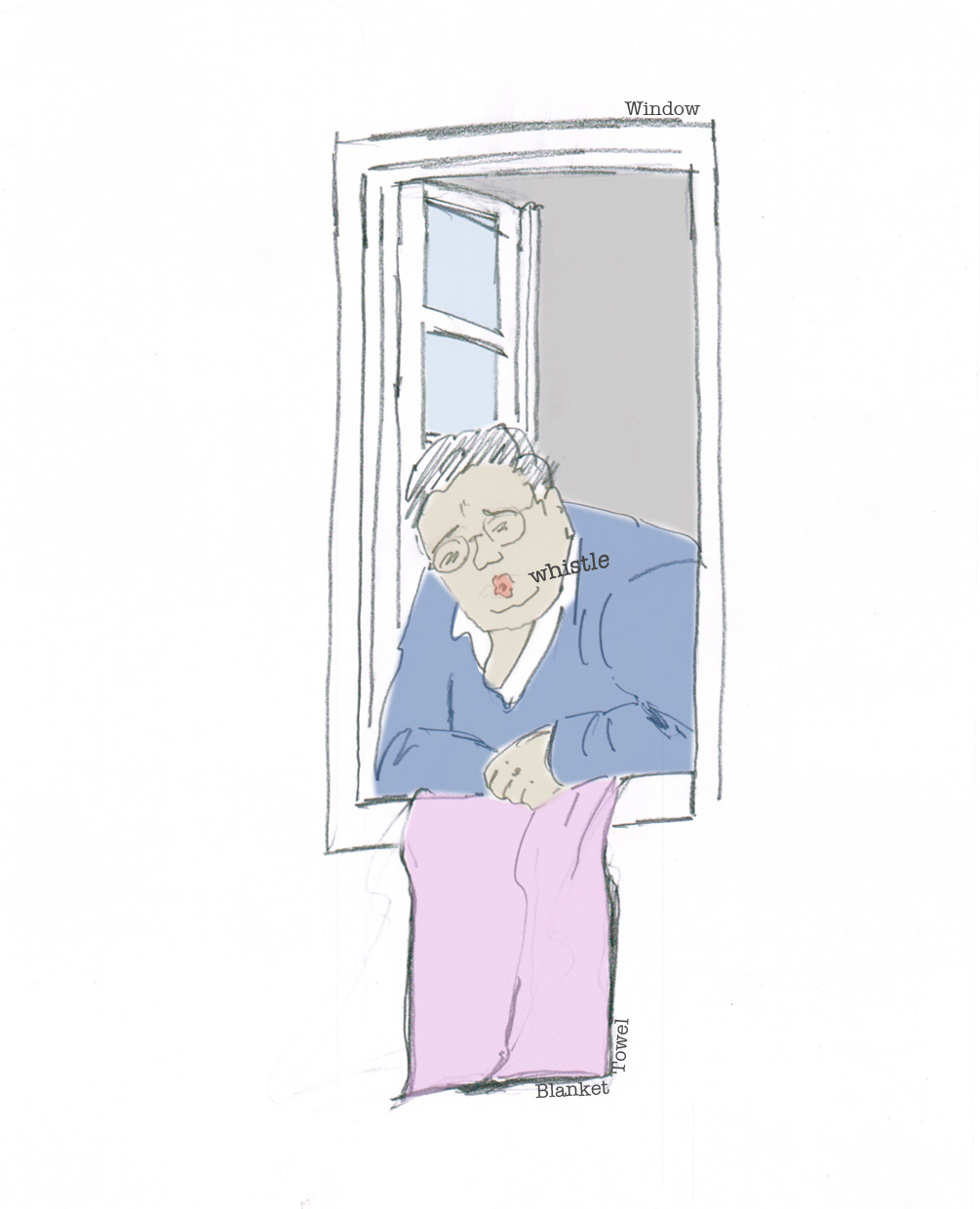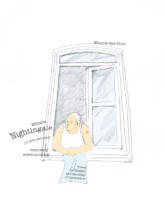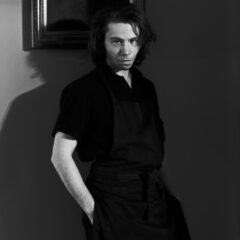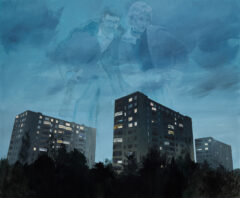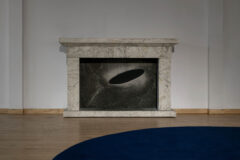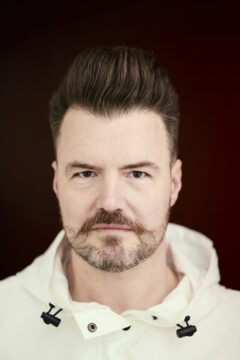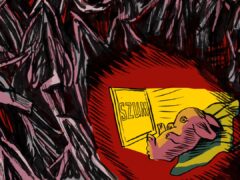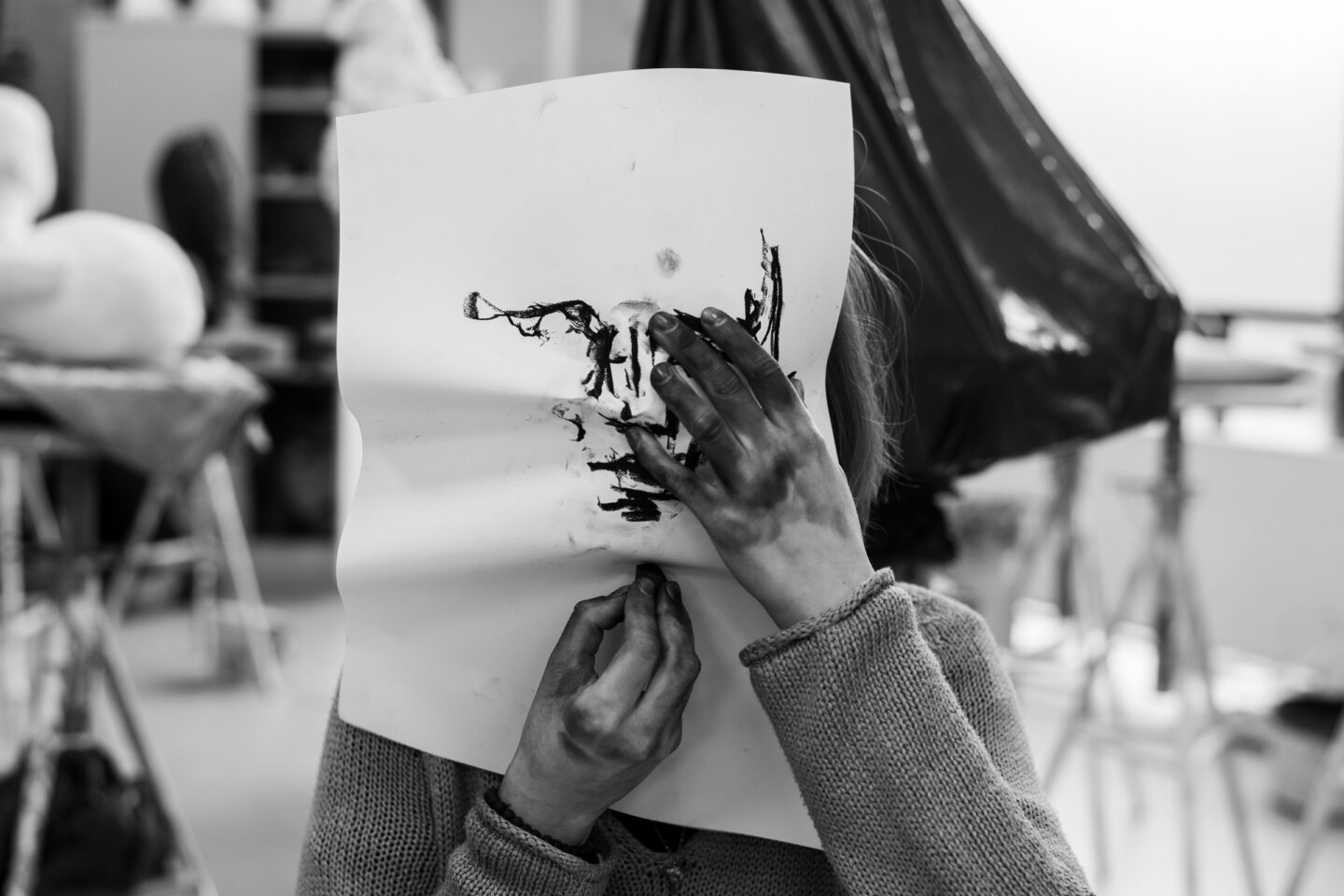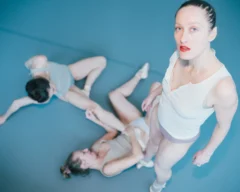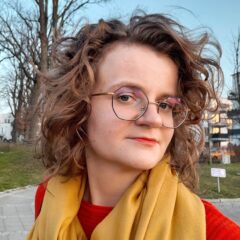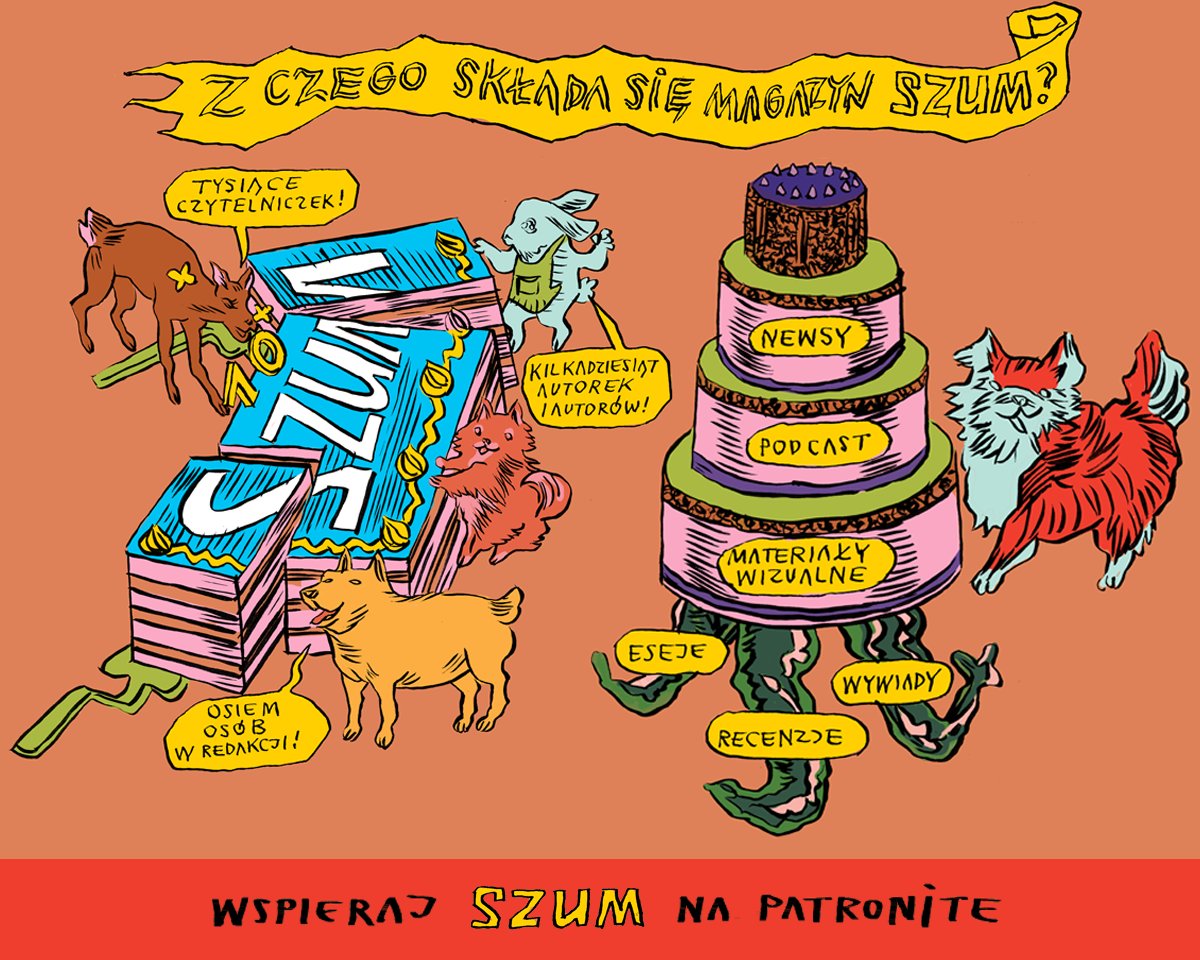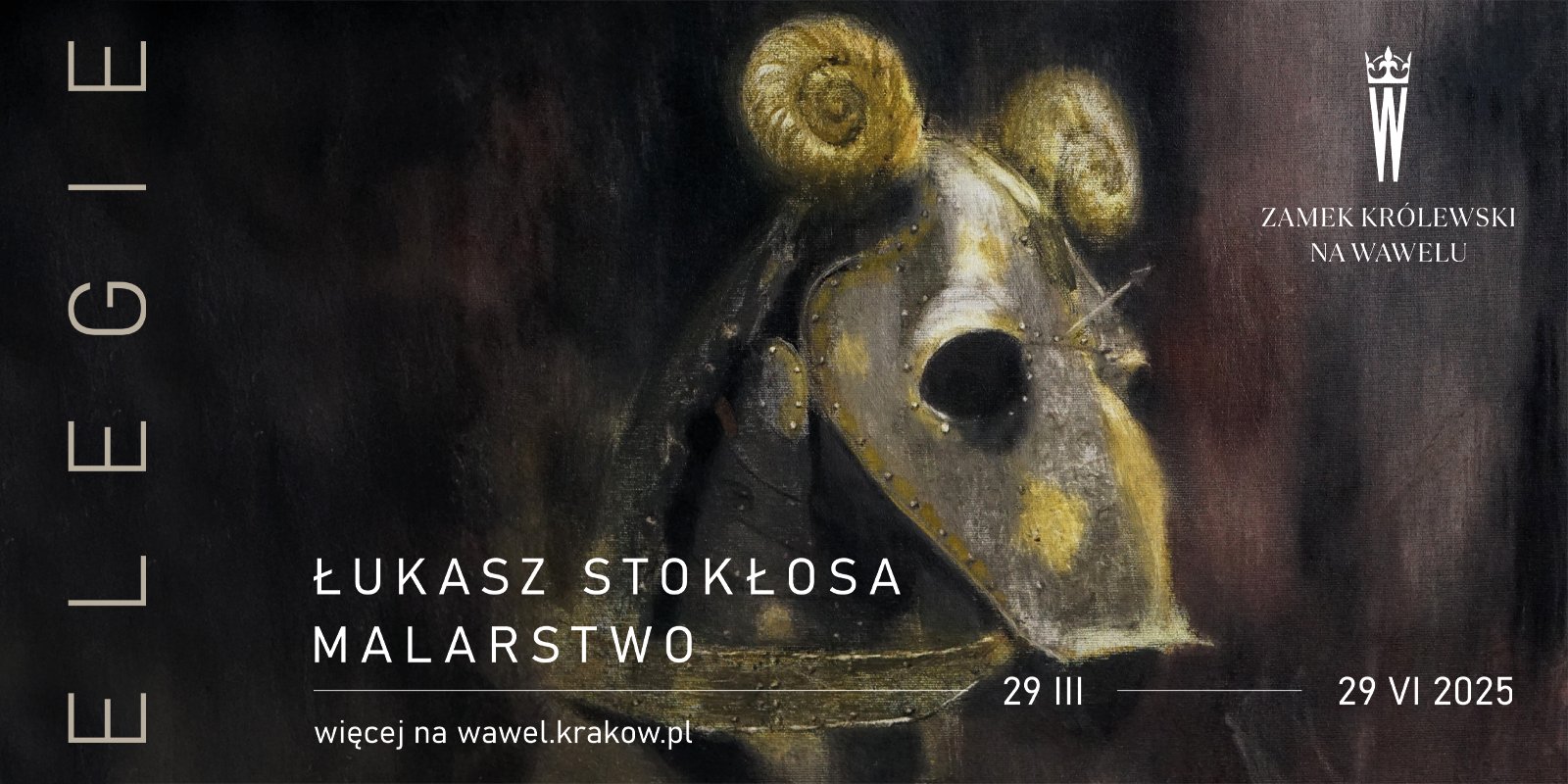„Konstruując chmury” Thorstena Goldberga w Centrum Rzeźby Polskiej w Orońsku / ”Constructing Clouds” by Thorsten Goldberg at Centre of Polish Sculpture in Orońsko

For English version scroll down
PL
Nowa wystawa Thorstena Goldberga, niemieckiego artysty, który specjalizuje się w projektach sztuki w przestrzeni publicznej, jest próbą pokazania nieuchwytnych zjawisk natury. Artysta tworzy obiekty, rzeźby, projekcje, instalacje artystyczne, a także rysunki. Nawiązują one rozmaite relacje z otoczeniem, geografią, historią miejsca i grupą społeczną, dla której są przeznaczone. Wydarzenia, polityka, język formalny, otoczenie – wszystko to może oddziaływać na dzieło sztuki umieszczone w przestrzeni publicznej.
W Centrum Rzeźby Polskiej w Orońsku, w Galerii „Oranżeria”, artysta prezentuje zestaw trzech głównych prac: Neonowy Cumulus (Neon Cumulus) – świetlny obiekt skonstruowany z neonowych konturów i lustra, projekcję video 25 minut deszczu + drzewo bukowe (25 min of rain + beech-tree) – lustrzane odbicie wielkiego bukowego drzewa na mokrym chodniku, oblewanym deszczem oraz Teren. Staw Rolina (Terrain. Rolina Pond) – topograficzny szklany model dna stawu Rolina, uzupełnionych mniejszymi obiektami, modelami i rysunkami. Wszystkie prace – amorficzne chmury, niewidzialne dno stawu, padający deszcz – próbują przedstawić nieuchwytne zjawiska przyrody.
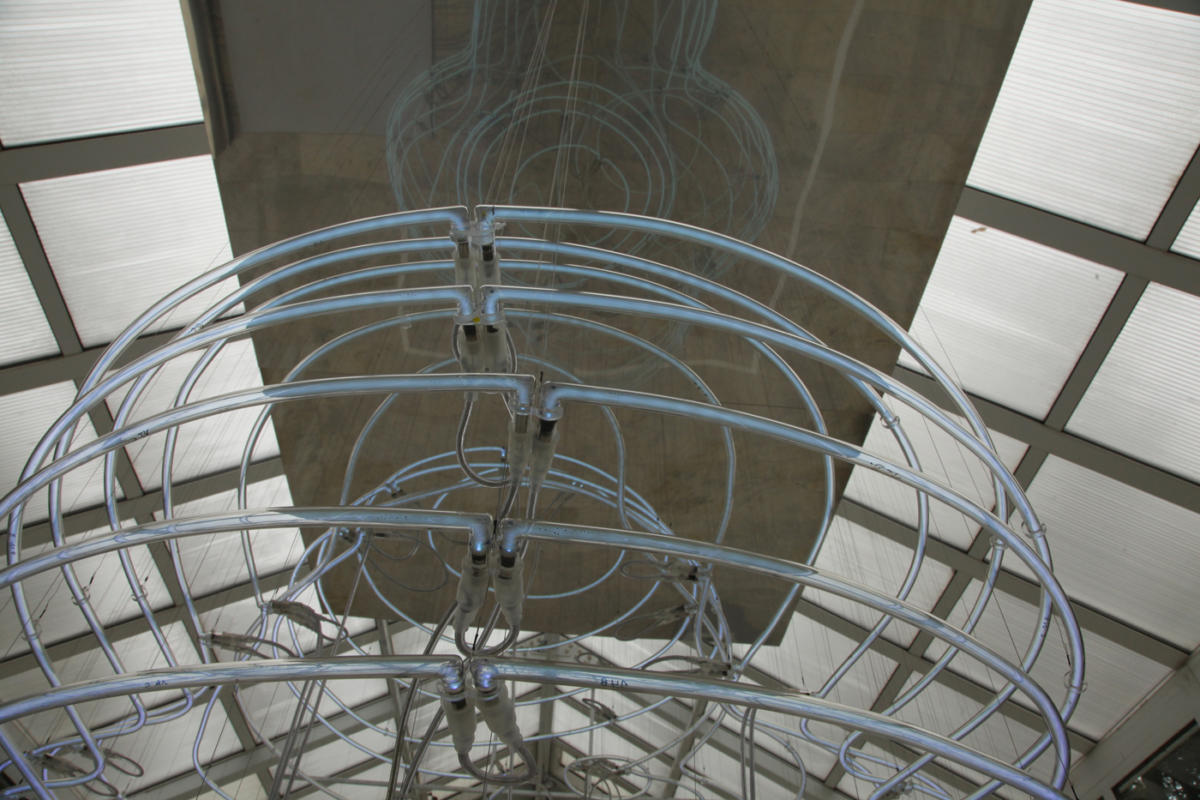
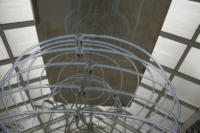
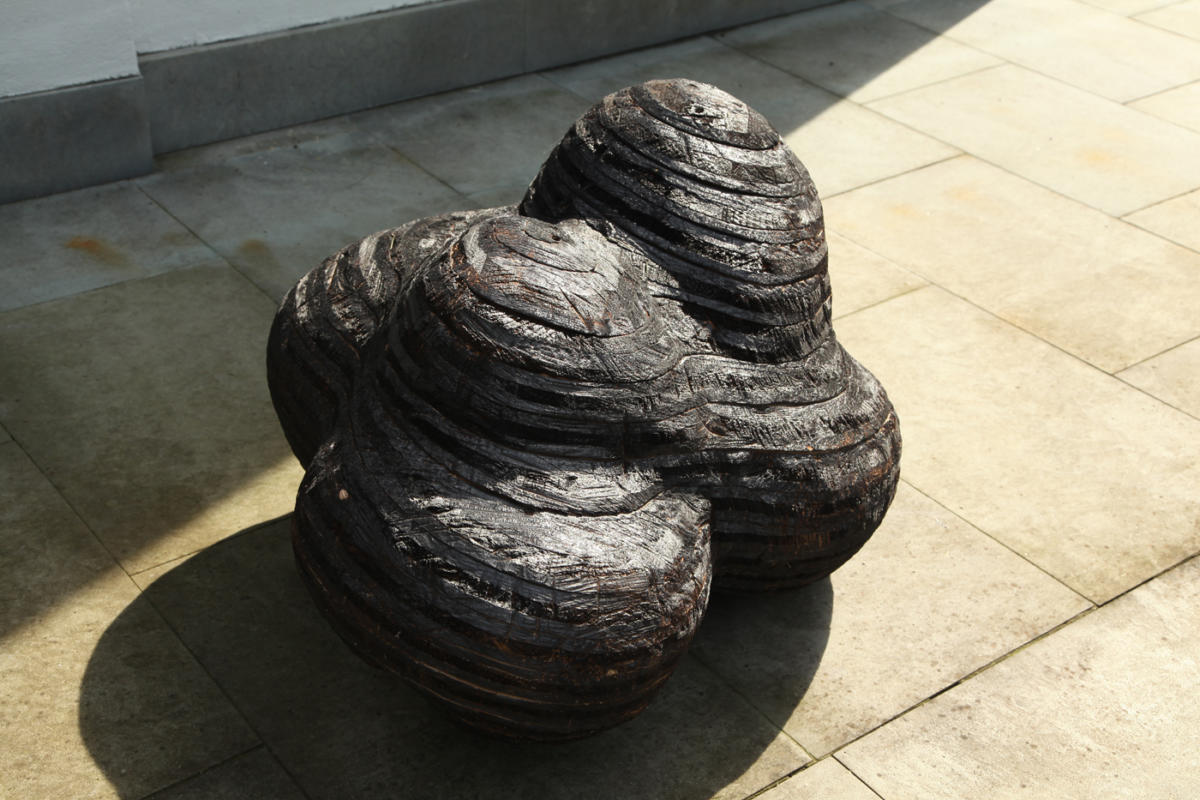

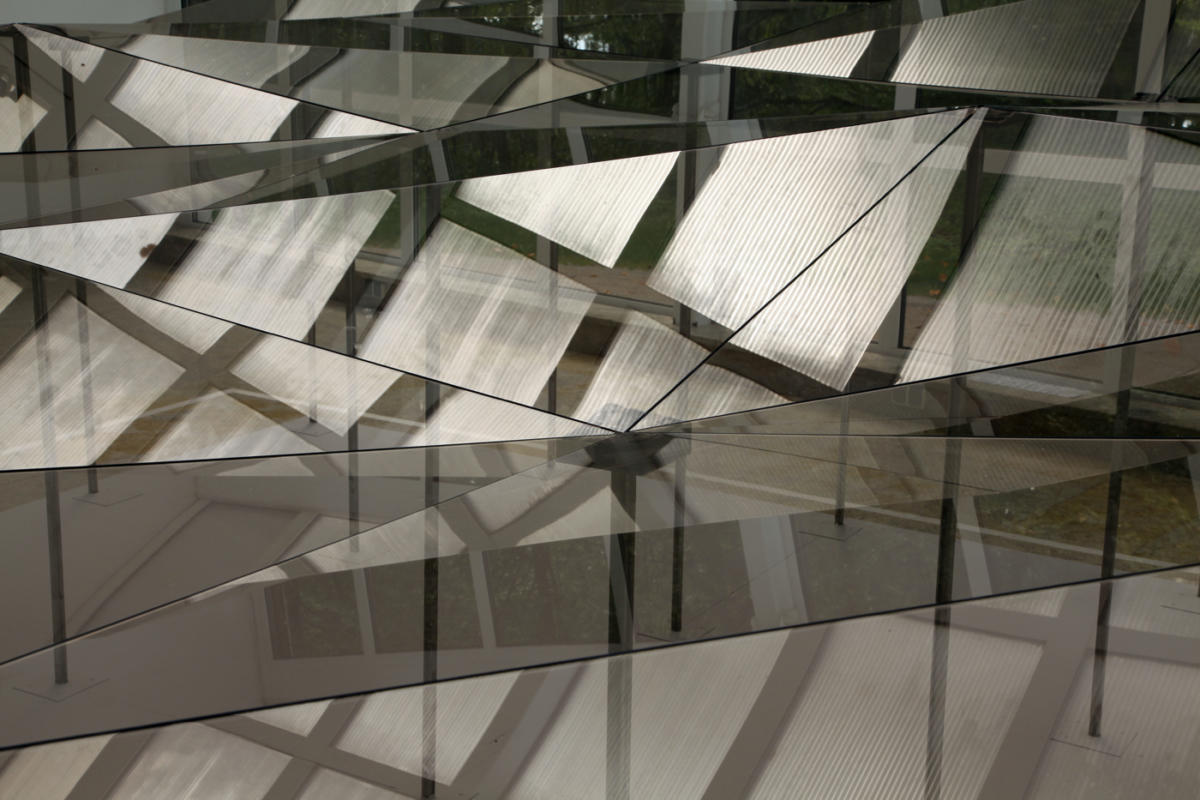
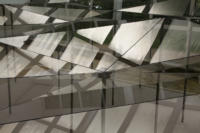
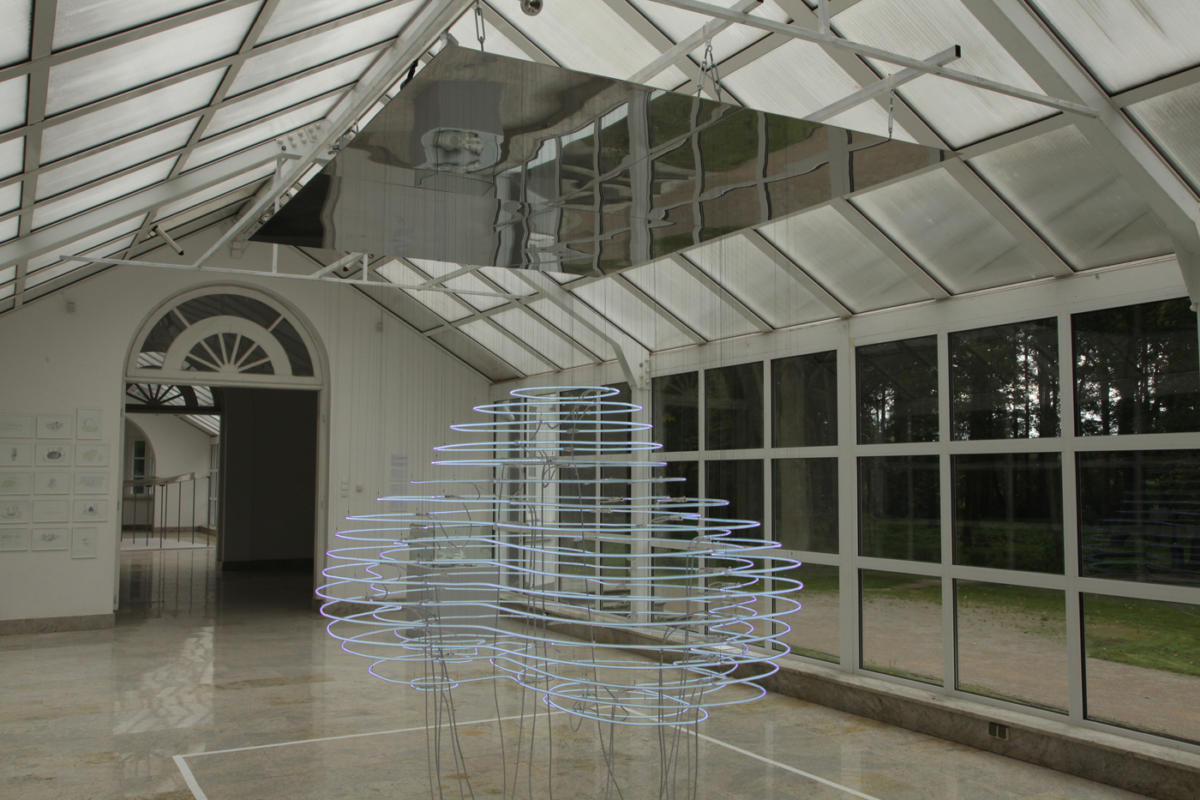
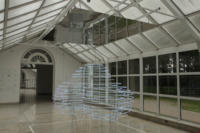
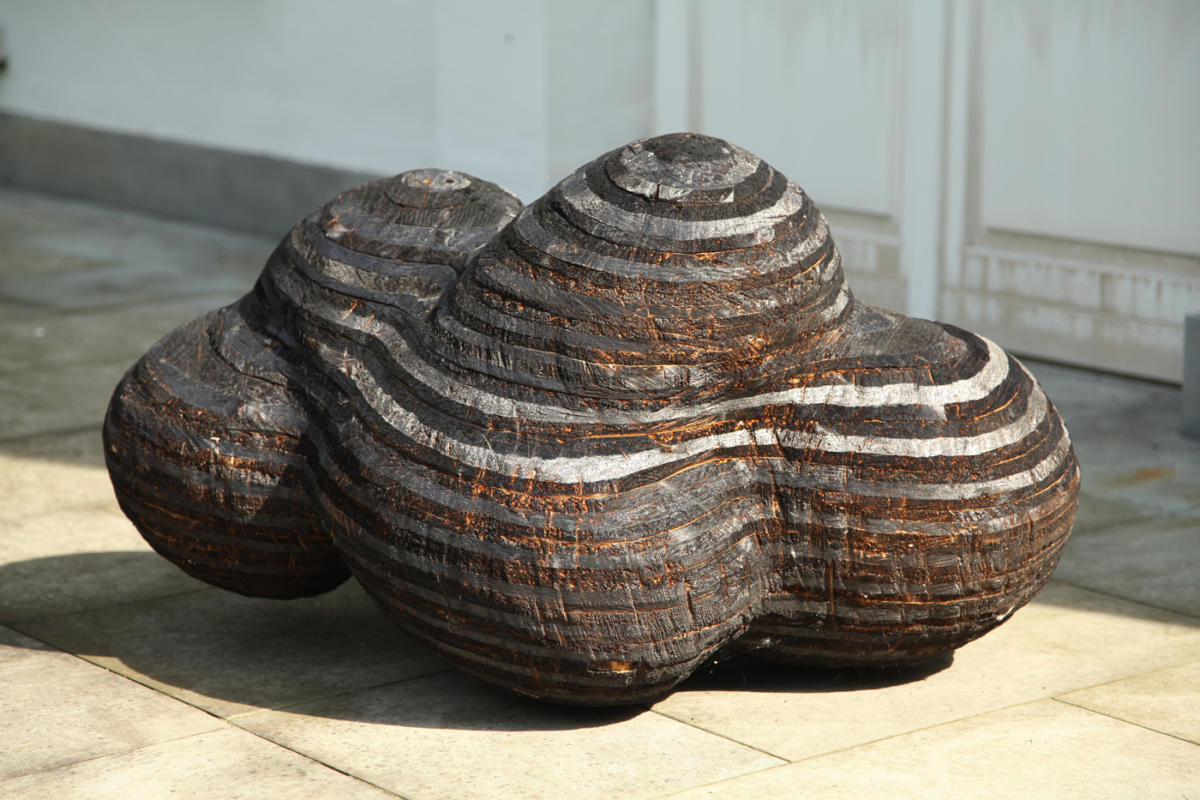


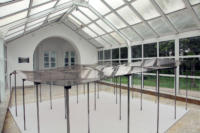
Chmury, jako temat przedstawienia, interesują artystę od co najmniej 10 lat. Pierwsza z nich – neonowa, usytuowana nad rzeką w Lippstadt – powstała w 2009 roku. Następne, wykonane z białego błyszczącego tworzywa sztucznego, umieszczono na dziedzińcu Federalnego Ministerstwa ds. Wyżywienia, Rolnictwa i Ochrony Konsumentów w Berlinie oraz w Parku Rzeźby Fundacji Herberta Gerischa w Neumünster. Jeszcze jedna neonowa świeci zupełnie niedaleko Orońska – nad Mazowieckim Centrum Sztuki Współczesnej „Elektrownia”. Trudno o obiekt, który rzeźbiarskiemu utwardzeniu przeciwstawiałby się bardziej niż chmura. Autor stawia pomnik właśnie temu ulotnemu zagęszczeniu unoszących się w powietrzu cząsteczek wody, tej romantycznie postrzeganej powierzchni projekcyjnej ludzkich tęsknot. Neonowe kontury są rzeźbiarską reprezentacją rysunków chmur umieszczanych na średniowiecznych mapach. Są metaforą nieskończoności, wolności, pragnienia podróży i życia pozaziemskiego. Prace Goldberga pytają zarówno o specyficzne ukierunkowanie miejsca, jak i o indywidualne, historyczne i społeczne utopie, kryjące się za współczesnymi wyobrażeniami idylli: za pomocą chmur ludzie przenoszą się w marzeniach gdzie indziej, uciekają od rzeczywistości. Budują sobie „zamki w obłokach“, by umiejscowić tam iluzoryczne wyobrażenia i pragnienia. Te świetlne obiekty reprezentują też brak granic i wolność myśli.
Na wystawie, oprócz Neonowego Cumulusa, zaaranżowano rodzaj studyjnego biurka, na którym umieszczone są modele chmur wykonane w różnych materiałach – porcelanie, posrebrzanym metalu i papier-mâché. Ukazują one proces twórczy towarzyszący powstawaniu każdego projektu w przestrzeni publicznej. Zanim to się stanie, poprzedzone jest gromadzeniem informacji, badaniami oraz próbami i eksperymentami. Srebrna chmura, wyglądająca jak jubilerski klejnot, jest miniaturowym modelem obłoku unoszącego się nad willą Gerischów w Neumünster, zaś porcelanowe chmury wykonano przed konstrukcją Cumulusa w Berlinie.
Projekcji video umieszczonej w środkowej części galerii towarzyszy złota gałązka – fragment gniazdka wykonanego z 24-karatowego złota – projektu stworzonego dla jednej z berlińskich szkół podstawowych znajdującej się w dzielnicy Marzahn-Hellersdorf. Zostanie ono umieszczone w szklanym sejfie w zewnętrznej ścianie budynku i będzie służyć jako lokata kapitału na przyszłe potrzeby tej szkoły.

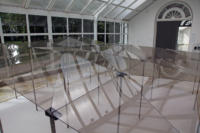

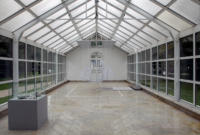
Instalacja Teren. Staw Rolina (Terrain. Rolina Pond) została zaprojektowana specjalnie na wystawę w Orońsku. Artysta najpierw zbadał dno i głębokość stawu, aby następnie zbudować jego szklany odpowiednik w galerii. Realizacja nawiązuje do projektów w norweskim mieście Bergen i kanadyjskim Edmonton. W Bergen płaszczyzna zbudowana ze stalowych polerowanych trójkątów przykrywa miejskie kamieniste nadbrzeże fiordu. Konstrukcja ustawiona jest zgodnie ze współrzędnymi Ziemi i dopasowuje się do topografii podłoża. Lśniące lustrzane powierzchnie norweskiego projektu, szklane zwierciadlane płaszczyzny pracy orońskiej, uzupełnione o pokryty srebrzystym grafitem model pracy kanadyjskiej odtwarzają topografie, jednocześnie odzwierciedlając otoczenie.
Wystawa w szklanym budynku oranżerii w parku rzeźby – zawierająca trzy przezroczyste instalacje, w tym dwie zbudowane ze szkła – nawiązuje do projektowania naturalnego ogrodowego pejzażu, poprzez mierzenie i konstruowanie naturalnych zjawisk, takich jak chmury, deszcz czy dno stawu w parku. Neon Cumulus (2010/2012), instalacja Teren. Staw Rolina (2017) i projekcja video 25 minut deszczu + drzewo bukowe, z dodatkiem makiet odnoszących się do projektów takich jak 24 karaty w Berlinie, Cumulus 11.08 w Neumünster, 53°20 w Edmonton czy 60°N 05° E (powłoka nad brzegiem) w Bergen korespondują z otaczającą je naturą, widoczną za szybami galerii. Artysta przekazał też przesłanie dla latających wokół ptaków pisząc je ultrafioletową farbą niewidoczną dla ludzkiego oka na szybach. Różnego rodzaju napisy zostały umieszczone tam zamiast tradycyjnych sylwetek drapieżnych ptaków, jakie mają chronić te inne przed zderzeniem z przezroczystymi powierzchniami.
W Galerii „Oranżeria” zaprezentowano także dwadzieścia rysunków-projektów do parku rzeźby w Orońsku. Jeden z nich wybrano do realizacji i od końca lipca tego roku będzie można podziwiać nową monumentalną rzeźbę zatytułowaną Opera się nie skończy, dopóki śpiewa gruba dama. Wyjaśnienie zagadkowego tytułu znajduje się w folderze towarzyszącym wystawie. Oprócz niego dostępny jest katalog prezentujący sztukę Thorstena Goldberga.
20 i 21 października tego roku, przy okazji ekspozycji artysty, odbędzie się międzynarodowa konferencja „Rzeźba dzisiaj II. O sztuce w przestrzeni publicznej”, która przybliży przykłady takiej twórczości i jej praktyczne strony. W konferencji wezmą udział przedstawiciele miast europejskich: Berlina, Wiednia, Brukseli i Oslo oraz polskich: Warszawy, Poznania i Gdańska.
Eulalia Domanowska
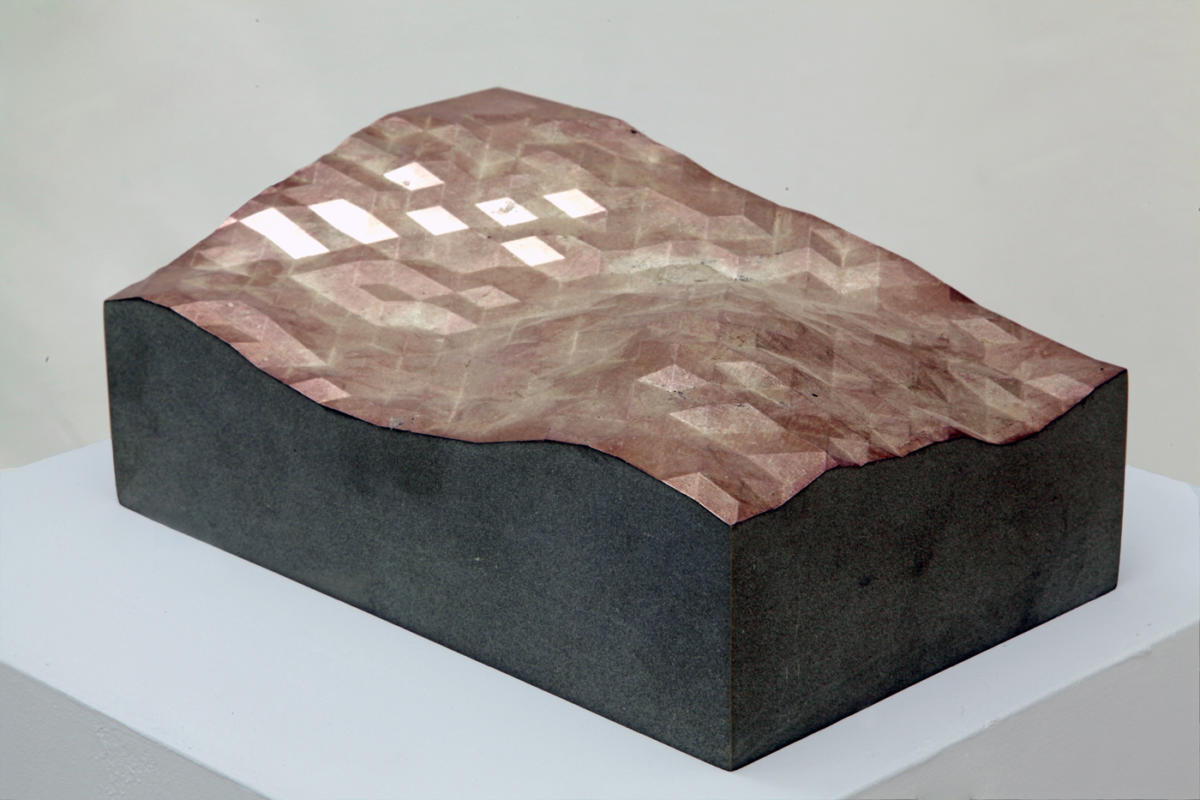
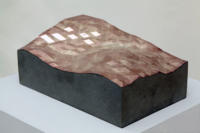


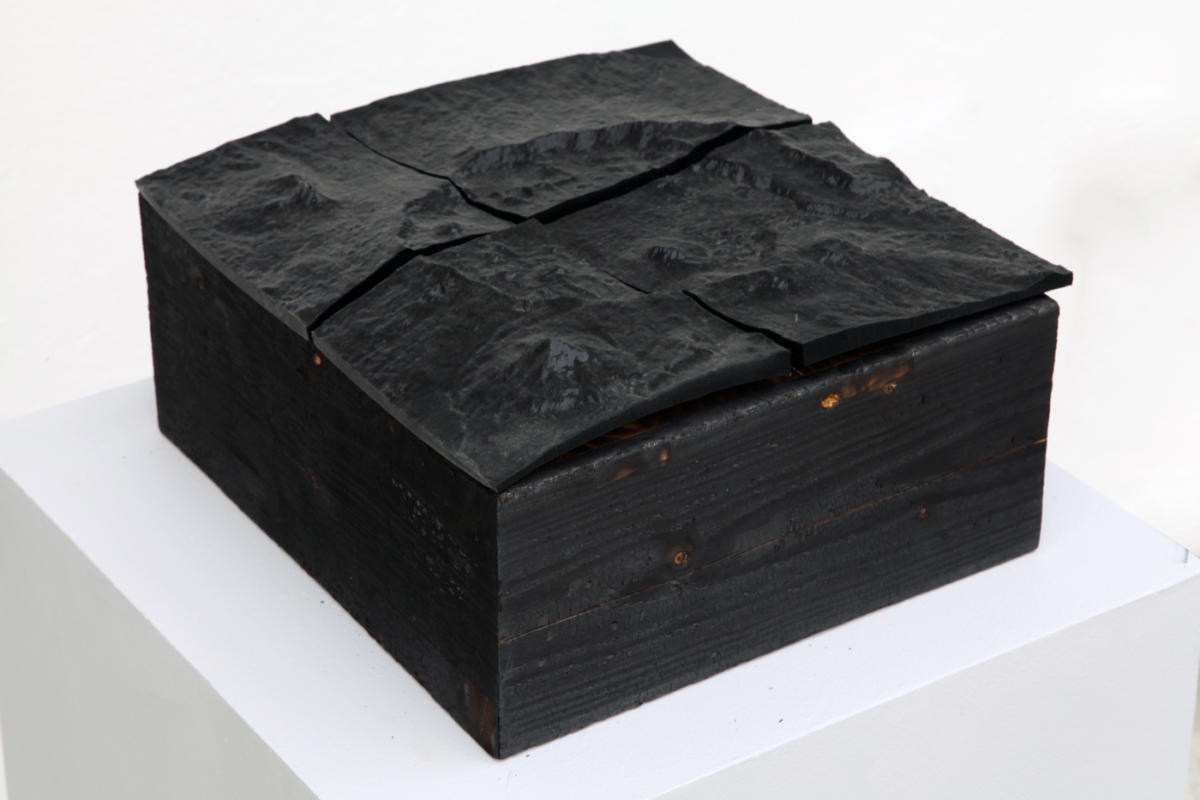


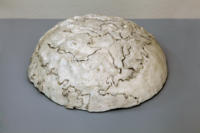
ENG
The new exhibition of Thorsten Goldberg, German artist who specializes in the projects of art in the public space, is an attempt to capture the elusive natural phenomena. The artist creates objects, sculptures, projections, artistic installations, as well as drawings. They forge various relations with the surroundings, geography, history of the site and the social group for which they are destined. Events, politics, formal language, surroundings – all of it may affect a work of art situated in the public space.
In the Centre of Polish Sculpture in Orońsko, at the “Orangery” Gallery the artist presents a set of three main works: Neon Cumulus – a light object built of neon contours and a mirror, the video-projection 25 Min. of Rain + Beech Tree – a mirror reflection of a huge beech tree in a wet pavement, poured over with rain and Terrain.(Rolina Pond) – a topographic glass model of the bed of the Rolina pond, complemented with smaller objects, models and drawings. All the works – the amorphous clouds, invisible bottom of the pond, pouring rain – attempt to present the intangible phenomena of nature.
Clouds, as a theme of an artwork, have interested the artist for at least 10 years. The first work – neon one, situated on the river in Lippstadt – was made in 2009. The next ones, made of white, shining plastic, were placed in the yard of the Federal Ministry of Food, Agriculture and Consumer Protection in Berlin and in the Sculpture Park of the Gerisch Foundation in Neumünster. One more neon cloud shines quite close to Orońsko – over the Mazovian Centre of Contemporary Art ‘Elektrownia’ in Radom. It is difficult to find an object that would oppose the sculptural hardening more than a cloud. And then, the artist erects a monument to this very elusive density of particles of water floating in the air, to this romantically perceived surface for the projection of human dreams. The neon contours are a sculptural interpretation of the drawings of clouds included in medieval maps. They are a metaphor of infinity, freedom, the desire to travel and extra-terrestrial life. Goldberg’s works pose questions both about the special direction of the place and about the individual, historical and social utopias hidden behind the contemporary images of an idyll: with the use of clouds, people travel in their dreams somewhere else, they escape from reality. They build their ‘castles in the clouds’, where their illusory imaginings and desires live. These light objects also represent the lack of boundaries and a freedom of thought.
Besides Neon Cumulus, the exhibition features a sort of study desk, on which there are models of clouds made in different materials – porcelain, silver-plated metal and papier-mâché. They present the creative process of the production of each object in the public space. Before it happens, what precedes it is gathering information, studies as well as tests and experiments. The silver cloud, which looks like a jeweler’s gem, is a miniature model of the cloud hovering over the Gerischs’ villa in Neumünster, whereas the porcelain clouds had been made before the construction of the Cumulus in Berlin.
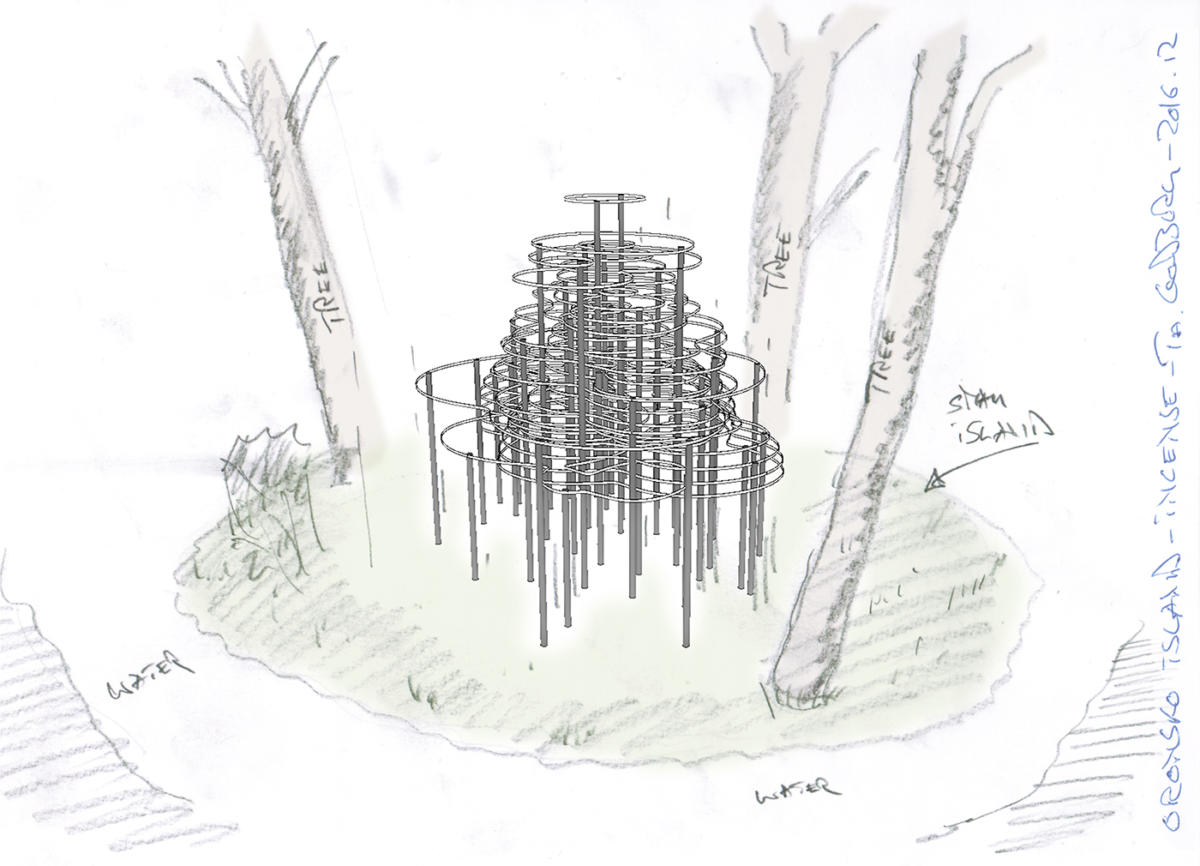


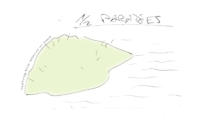
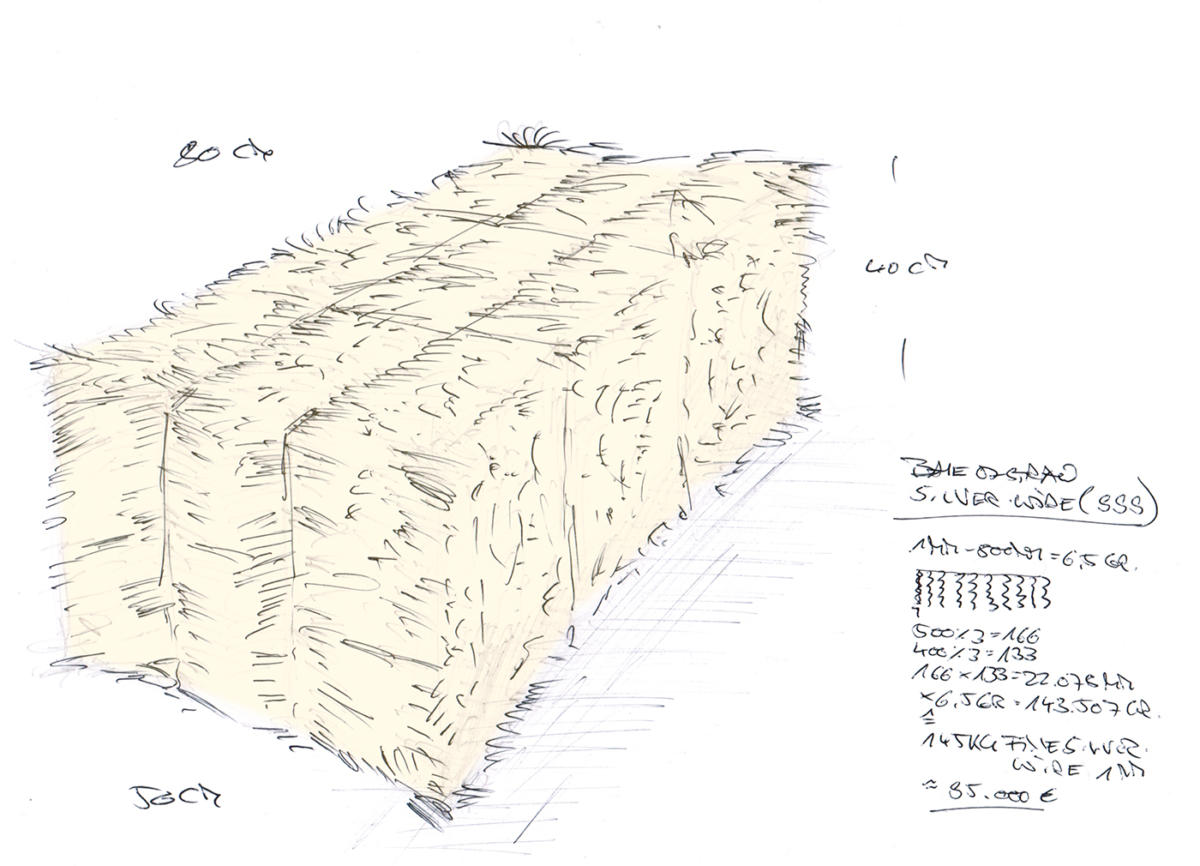

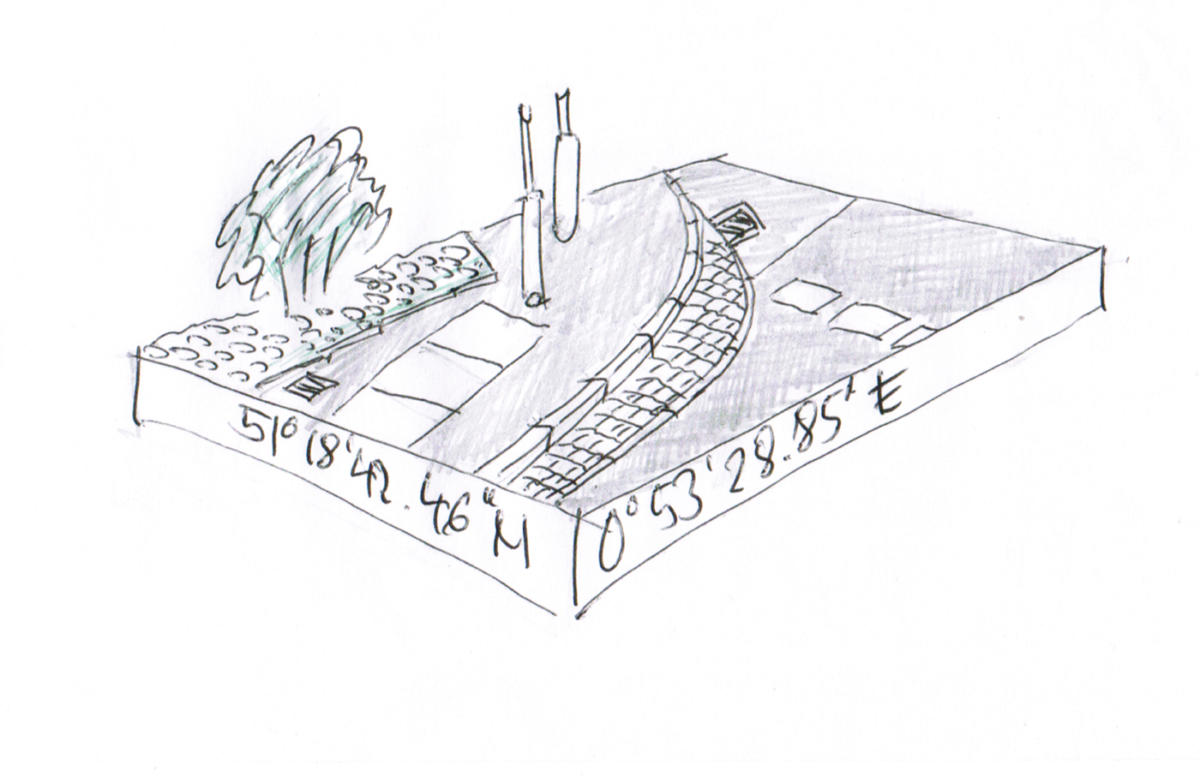

The video projection shown in the middle part of the gallery is accompanied by a gold twig – a fragment of the nest made of 24-carat gold for a Berlin primary school situated in the district Marzahn-Hellersdorf. It will be placed in a glass safe in the outer wall of the building and will serve as an investment for the school’s future needs.
The installation Terrain. Rolina Pond was designed specially for the exhibition in Orońsko. The artist had first examined the bottom and the depth of the pond, and then built its glass equivalent in the gallery. The project refers to the works in the Norwegian city of Bergen and the Canadian Edmonton. In Bergen, a surface built of polished, steel triangles covers the rocky waterside of the fjord in the city. The construction is adjusted to the geographical coordinates of the Earth and adapts to the topography of the ground. The shining, mirror surfaces of the Norwegian project, the glass surfaces of the Orońsko work, complemented with a model of the Canadian work, covered in silvery graphite, reproduce topographies and at the same time illustrate the surroundings.
The exhibition in the glass building of the orangery in the sculpture park – featuring three transparent installations, including two built of glass – refers to designing the natural garden landscape, by measuring and constructing natural phenomena like clouds, rain or the bed of a pond in the park. Neon Cumulus (2010/2012), installation Terrain. Rolina Pond (2017) and the video projection 25 Min. of Rain + Beech Tree, with the addition of mock-ups of related projects, such as 24kt in Berlin, Cumulus 11.08 in Neumünster, 53°20 in Edmonton or 60°N 05°E (encased waterside) in Bergen, correspond to the nature surrounding them, seen outside the gallery windows. The artist also conveyed a message for the birds flying around, writing it on the glass panes in ultraviolet paint, invisible for the human eye. Instead of the traditional silhouettes of predators, which are supposed to protect the birds from crashing into transparent surfaces, he placed there various inscriptions.
The “Orangery” Gallery also displays twenty drawings-designs for the sculpture park in Orońsko. One of them has been chosen to be produced and since the end of July the visitors will be able to admire the new, monumental sculpture titled The Opera Ain’t over till the Fat Lady Sings. The explanation of the mysterious title can be found in the folder accompanying the exhibition. Besides, a catalogue presenting Thorsten Goldberg’s work is also available.
On 20th and 21st October this year, coinciding with Thorsten Goldberg’s exhibition, an international conference will be held in Orońsko: ‘Sculpture Today 2. On Art in the Public Space’, which will introduce examples of such art and its practical aspects. The participants of the conference include representatives of European cities: Berlin, Vienna, Brussels and Oslo, as well as Polish cities: Warsaw, Poznan and Gdansk.
Eulalia Domanowska
Przypisy
Stopka
- Osoby artystyczne
- Thorsten Goldberg
- Wystawa
- Konstruując chmury / Constructing Clouds
- Miejsce
- Centrum Rzeźby Polskiej w Orońsku / Centre of Polish Sculpture in Orońsko
- Czas trwania
- 29.07–22.10.2017
- Osoba kuratorska
- Eulalia Domanowska
- Strona internetowa
- rzezba-oronsko.pl

